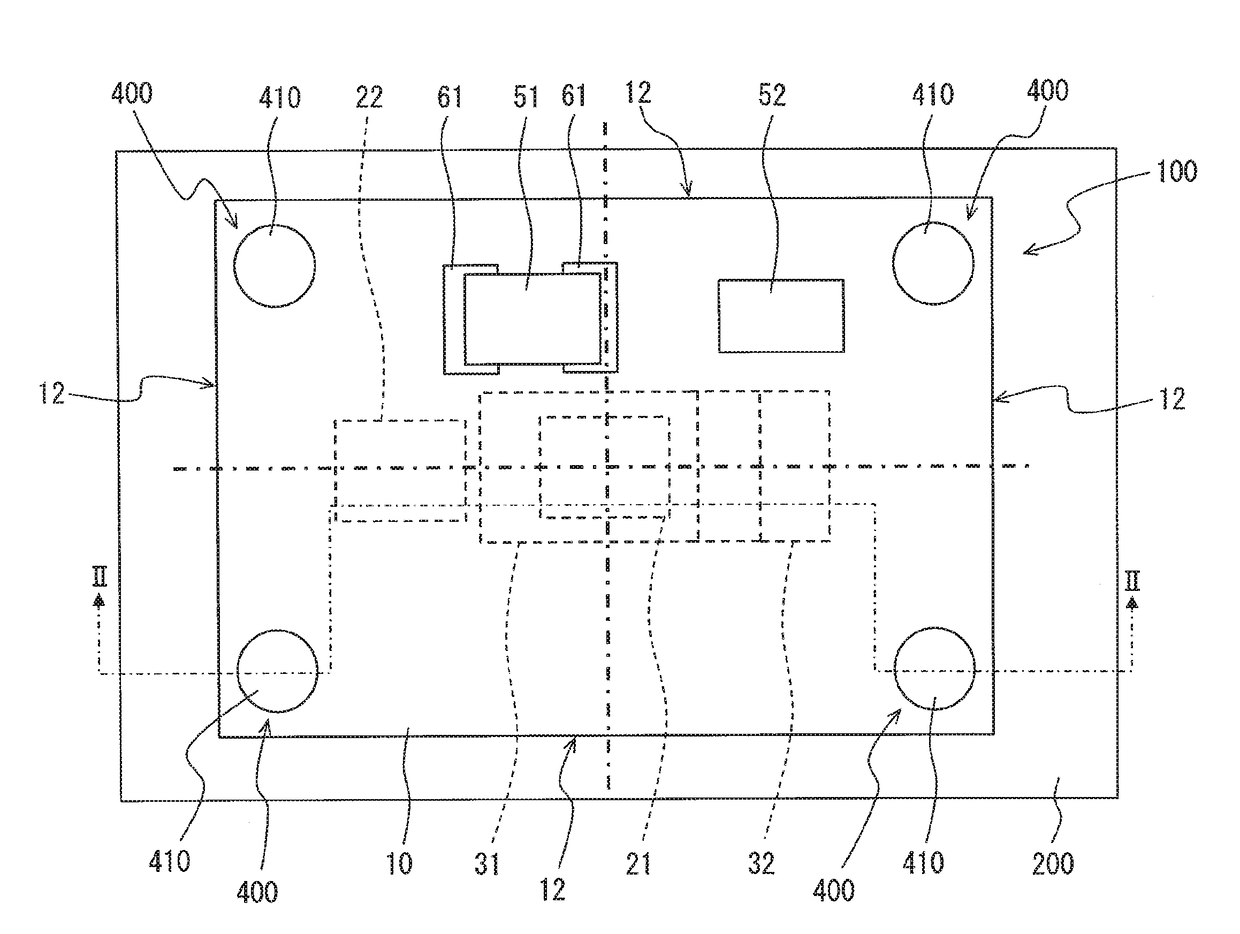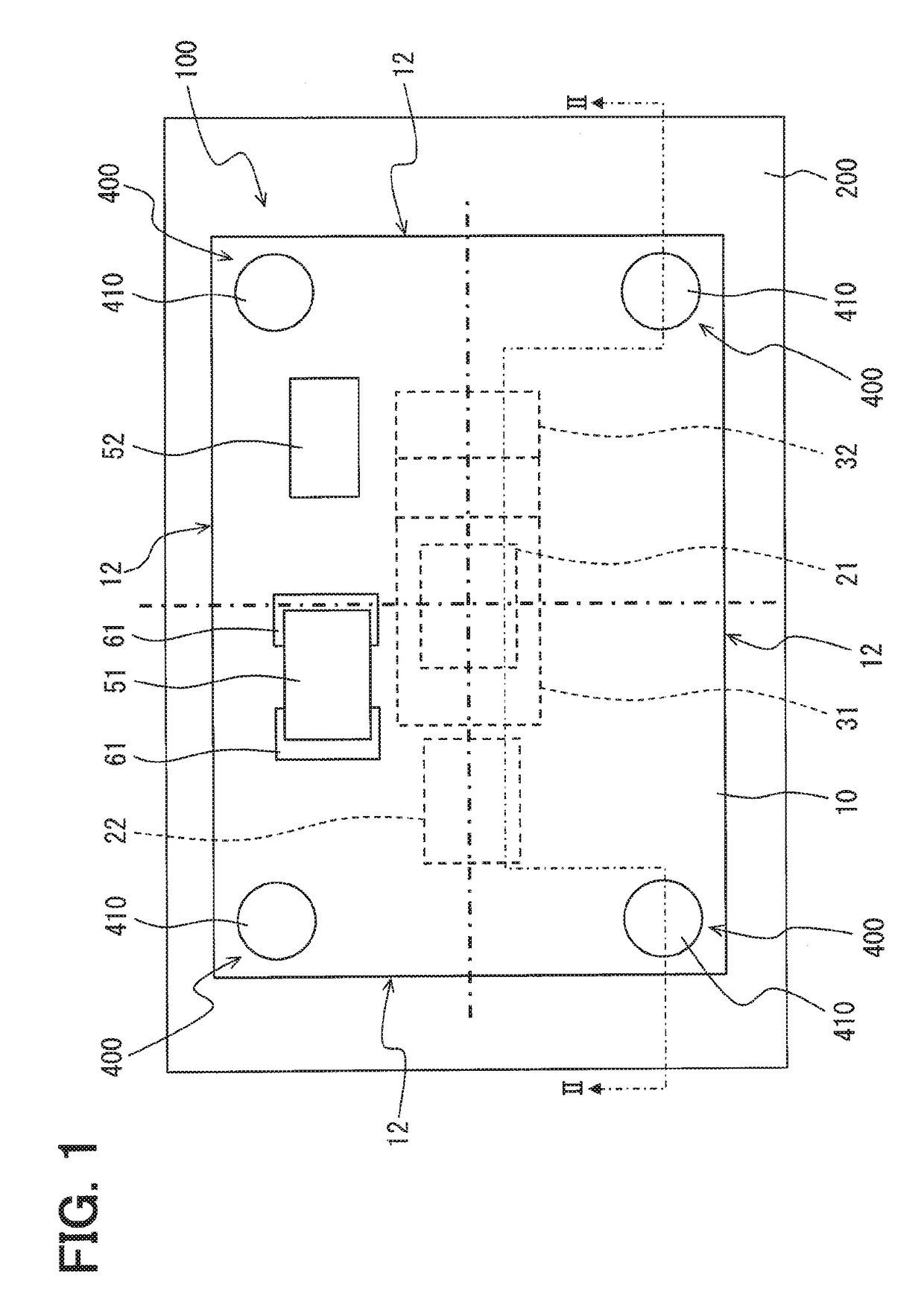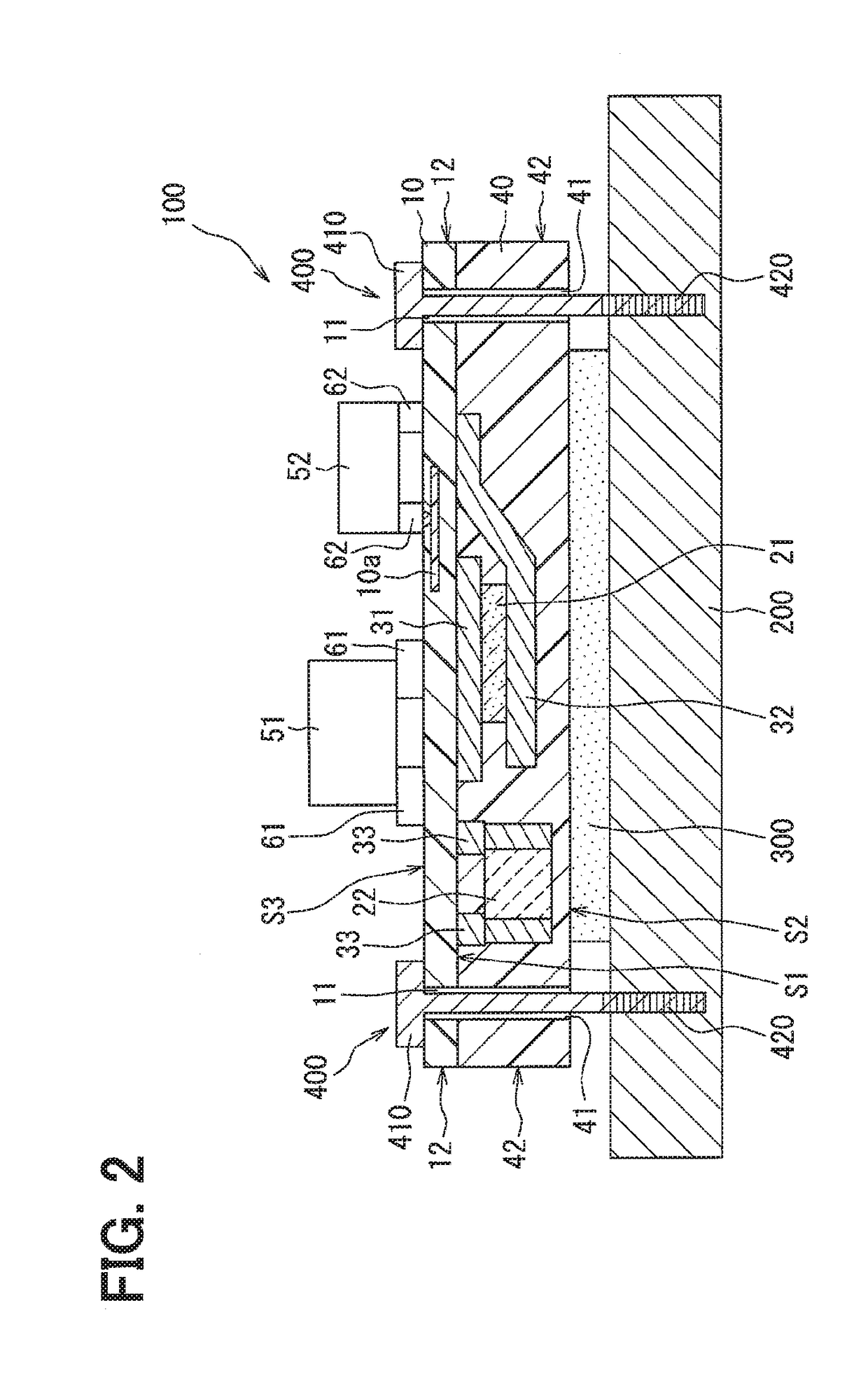Electronic device
a technology of electronic devices and sealing resins, applied in the manufacture of printed circuits, printed circuit aspects, basic electric elements, etc., can solve the problems of reducing the area between the sealing resin and the heat radiation member, increasing the shrinkage factor of the sealing resin, and reducing the heat radiation efficiency, so as to achieve the effect of suppressing the decreas
- Summary
- Abstract
- Description
- Claims
- Application Information
AI Technical Summary
Benefits of technology
Problems solved by technology
Method used
Image
Examples
first modified example
[0075](First Modified Example)
[0076]It may be preferable that the resin substrate 10 and the mold resin 40 of the mold package 100 have α1 and α2 for maintaining a cry bend in the first temperature range, and that al of the mold resin 40 be in a range of α1>10×10−6 / ° C. A cry bend state of the mold package 100 is also achievable by decreasing α1. However, when the difference between α1 and α2 of the mold package 100 increases, separation may be caused in the interface between the mold resin 40 and the circuit element sealed by the mold resin 40. Particularly, a of the chip capacitor 22 is generally smaller than each of α1 and α2. In addition, the chip capacitor 22 has a size larger than the size of the heat-generation element 21. Accordingly, when the difference between α1 and α2 increases in the mold package 100, a crack may be produced in the resin substrate 10, as well as separation caused in the interface between the chip capacitor 22 and the mold resin 40. More specifically, st...
second modified example
[0082](Second Modified Example)
[0083]It may be preferable that the mold package 100 satisfy a relationship (E1+10)≦E2 between a modulus of elasticity E1 of the mold resin 40 and a modulus of elasticity E2 of the resin substrate10, in addition to the relationship of the linear expansion coefficients described in the above embodiment. When the mold package 100 satisfies this relationship of modulus of elasticity, a cry bend is easily achieved in the first temperature range. The modulus of elasticity E1 of the mold resin 40 is approximately in a range from 10 GPa to 20 GPa. Accordingly, the modulus of elasticity E2 of the resin substrate 10 lies approximately in a range from 20 GPa to 30 GPa. The mold package 100 which includes the mold resin 40 and the resin substrate 10 having the foregoing relationship between the modulus of elasticity E1 and E2 easily produces a cry bend in the first temperature range.
[0084]The mold package 100 may he a mold package satisfying the relationship of t...
third modified example
[0085](Third Modified Example)
[0086]It may be preferable that the mold package 100 satisfy a condition that the thickness of the mold resin 40 is twice as large as the thickness of the resin substrate 10 or larger, in addition to the relationship of the linear expansion coefficients described in the above embodiment. When the thickness of the mold resin 40 of the mold package 100 is twice as large as the thickness of the resin substrate 10 or larger, a cry bend is easily produced in the first temperature range. For example, the mold package 100 may include the resin substrate 10 having a thickness of approximately 1 mm, and the mold resin 40 having a thickness of 2 mm or longer.
[0087]The mold package 100 may be a mold package satisfying the relationship of the thicknesses described in the third modified example in addition to the relationship of the linear expansion coefficients described in the first modified example, and the relationship of the modulus of elasticity described in t...
PUM
 Login to View More
Login to View More Abstract
Description
Claims
Application Information
 Login to View More
Login to View More - R&D
- Intellectual Property
- Life Sciences
- Materials
- Tech Scout
- Unparalleled Data Quality
- Higher Quality Content
- 60% Fewer Hallucinations
Browse by: Latest US Patents, China's latest patents, Technical Efficacy Thesaurus, Application Domain, Technology Topic, Popular Technical Reports.
© 2025 PatSnap. All rights reserved.Legal|Privacy policy|Modern Slavery Act Transparency Statement|Sitemap|About US| Contact US: help@patsnap.com



